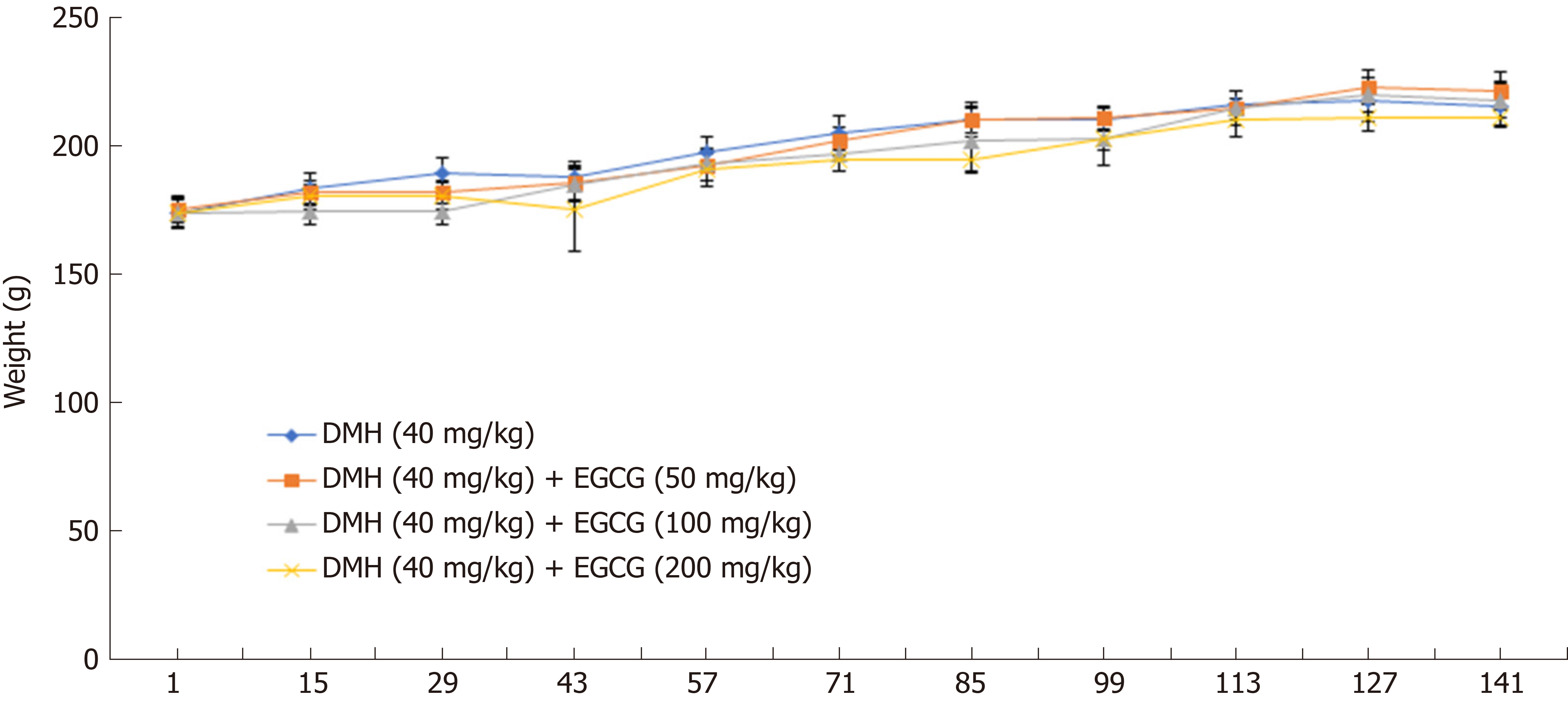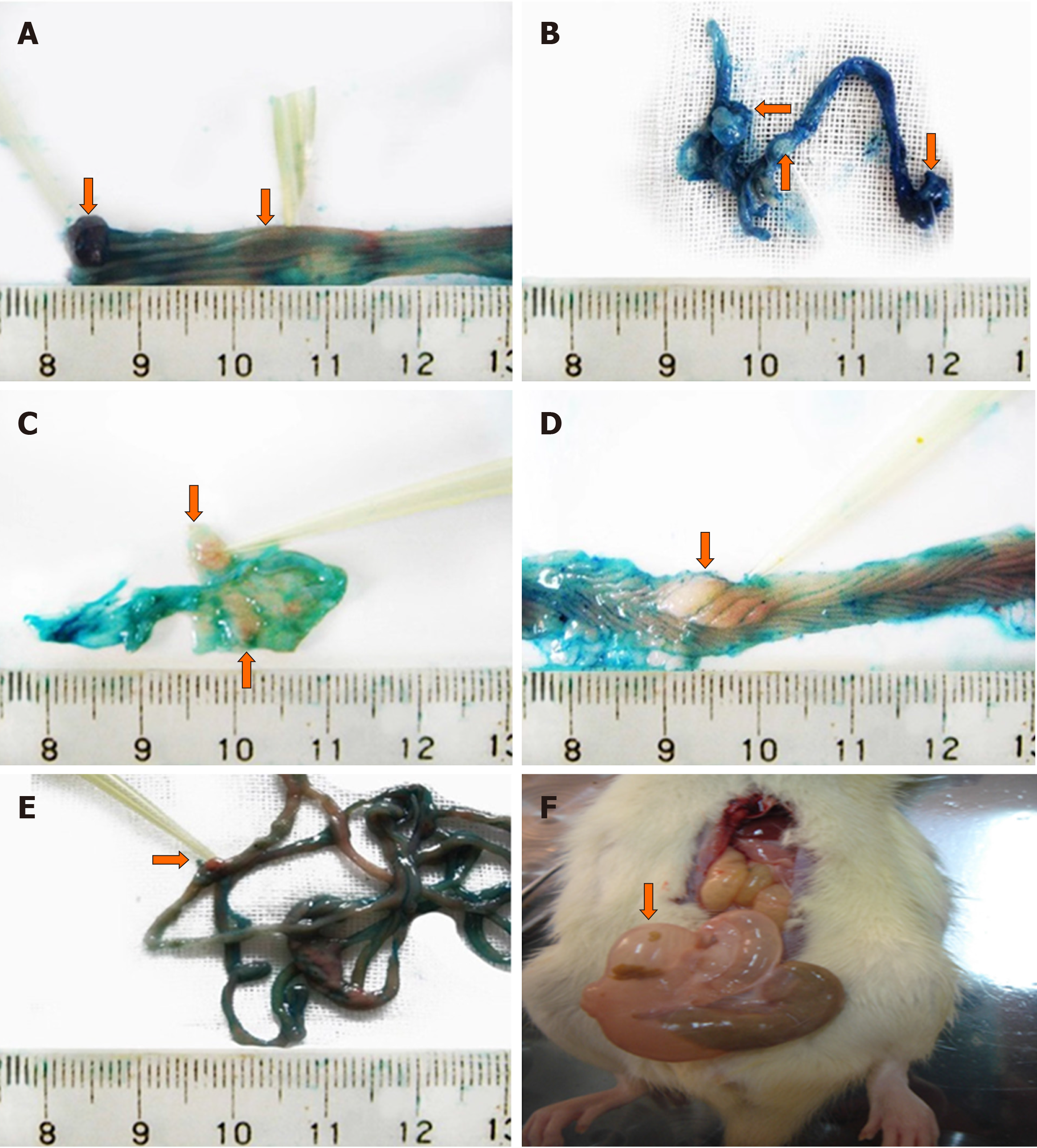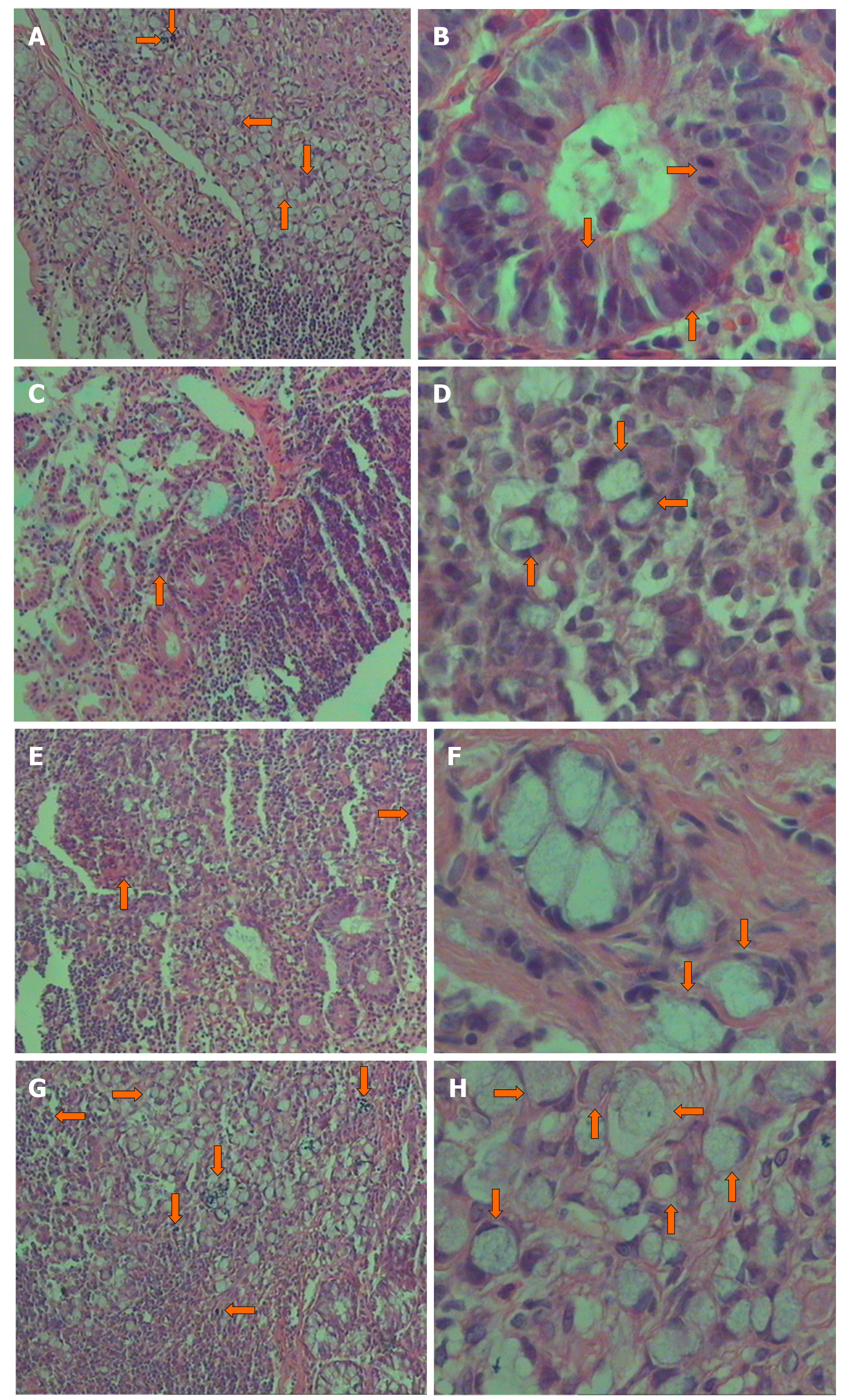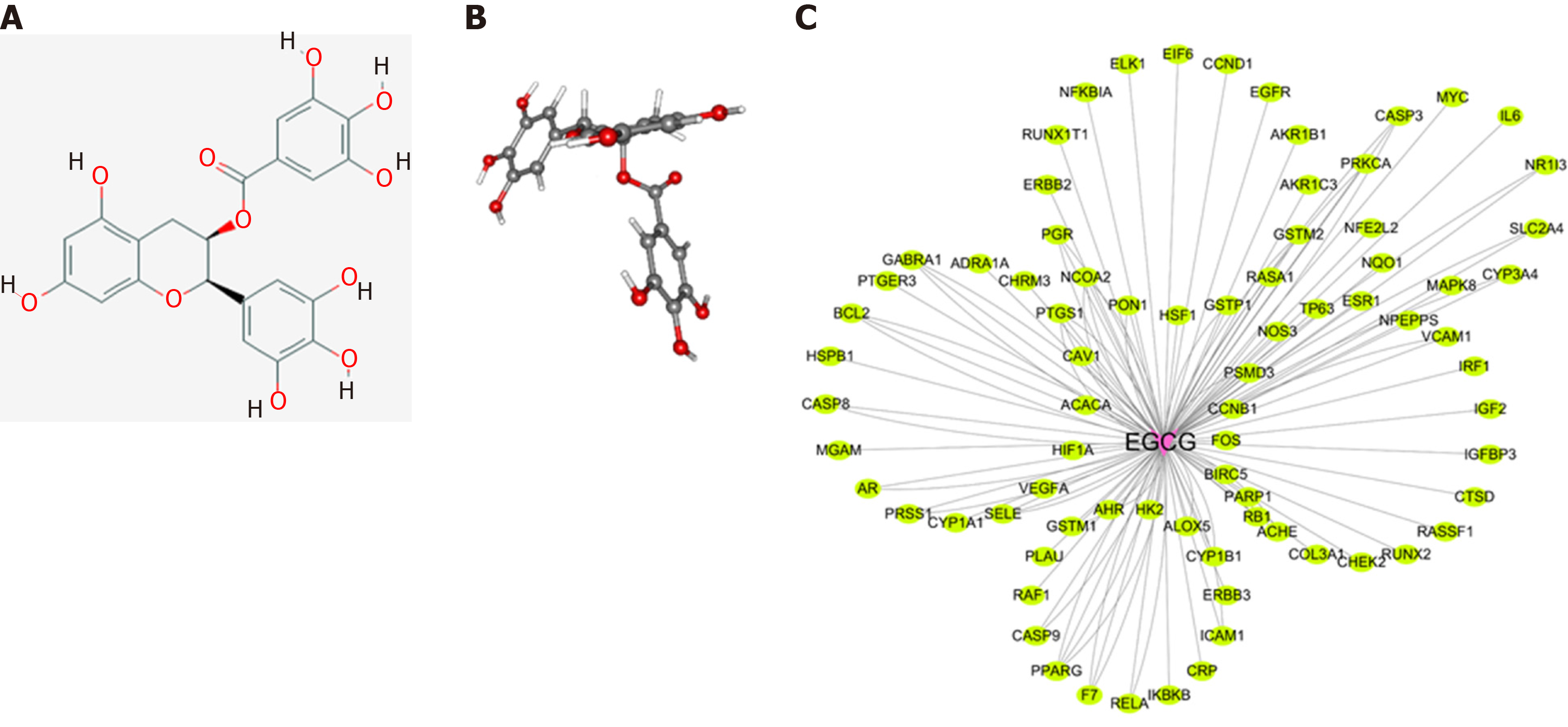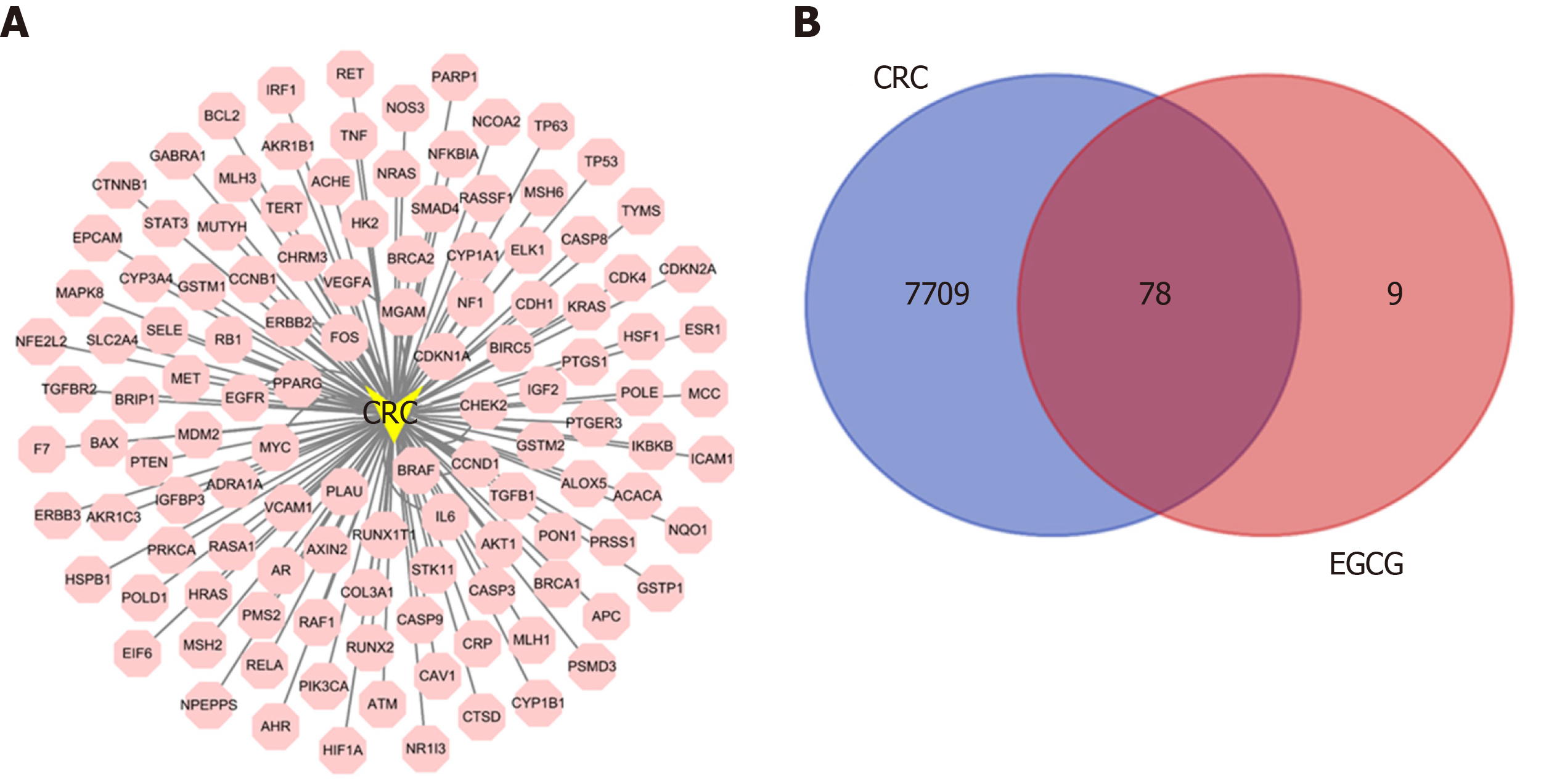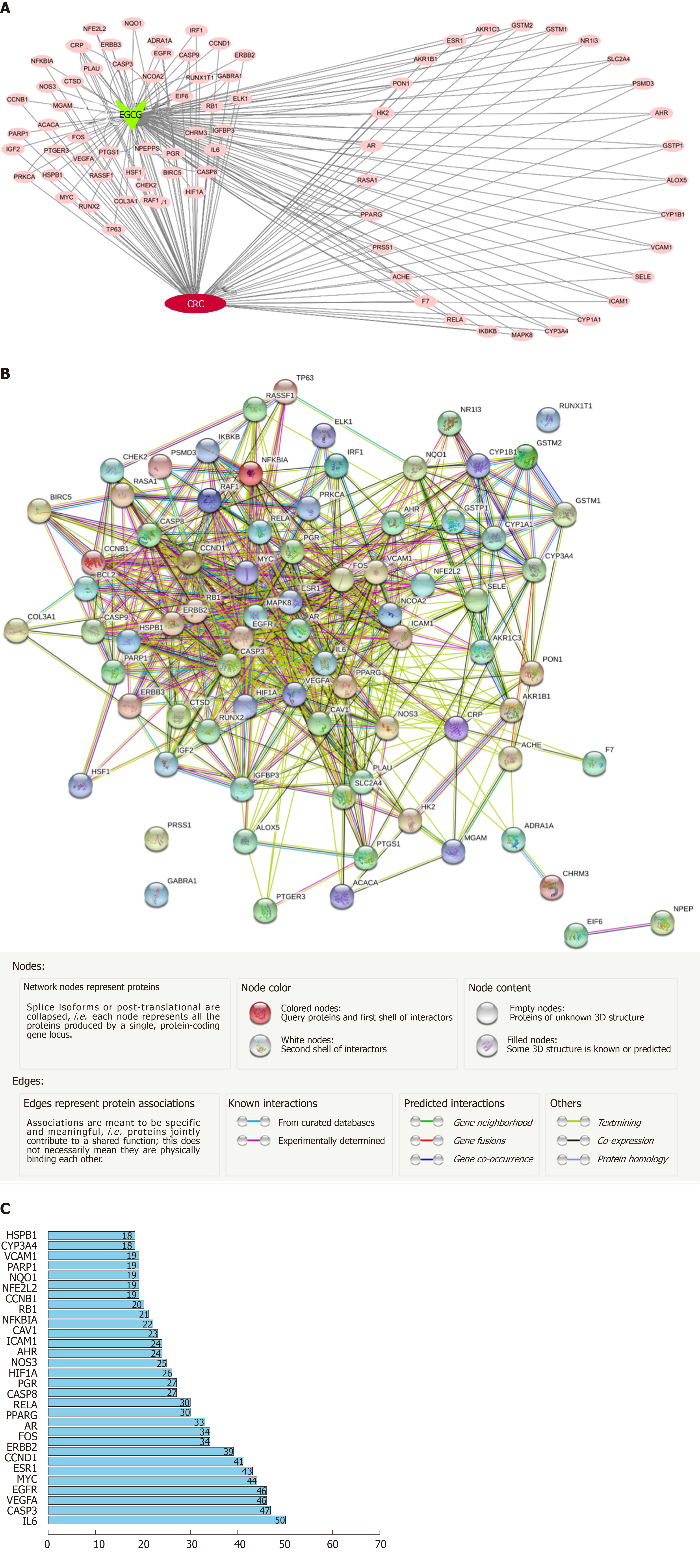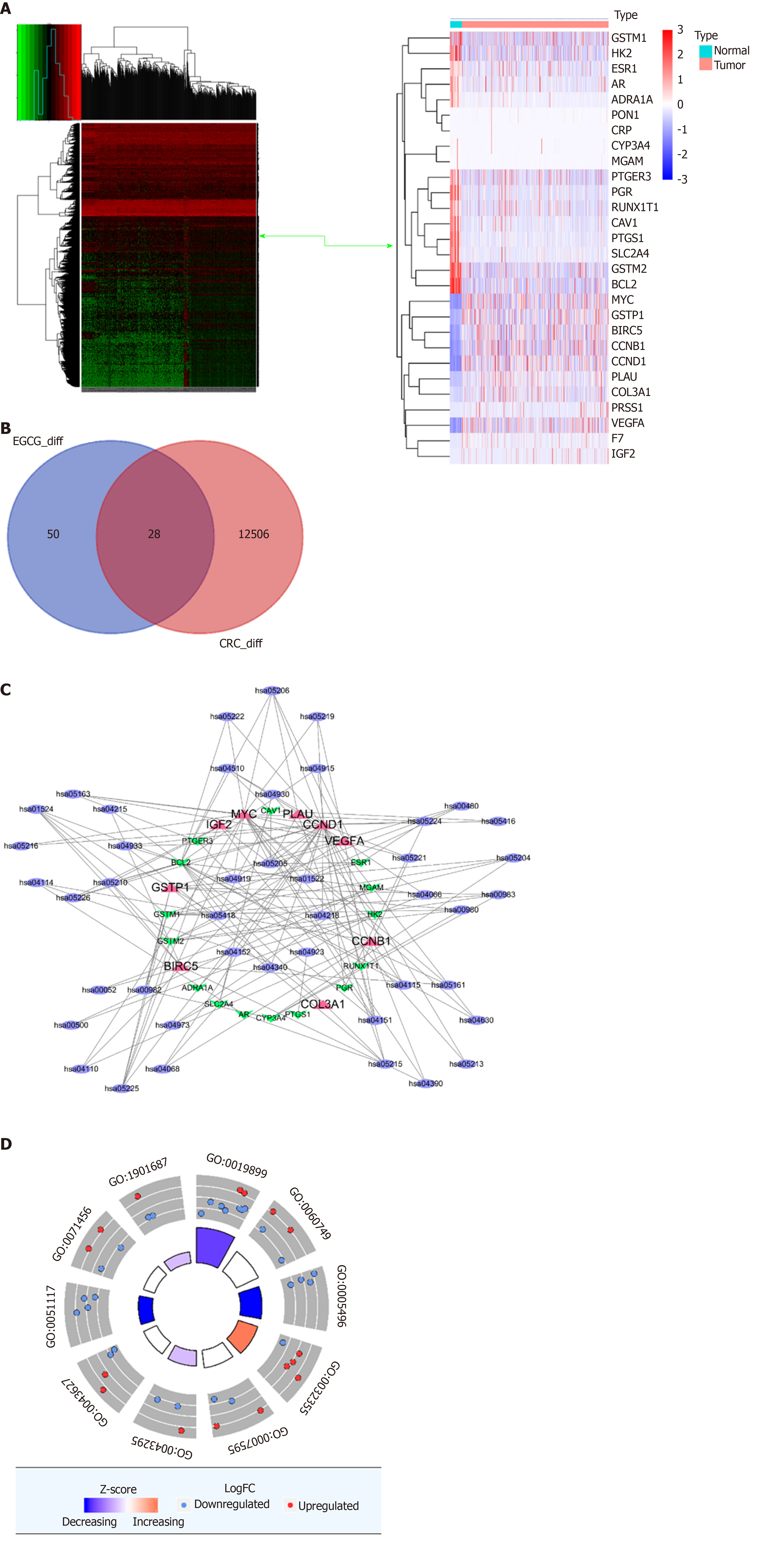Copyright
©The Author(s) 2020.
World J Gastroenterol. May 7, 2020; 26(17): 2064-2081
Published online May 7, 2020. doi: 10.3748/wjg.v26.i17.2064
Published online May 7, 2020. doi: 10.3748/wjg.v26.i17.2064
Figure 1 Change curves of body weights of rats in different groups.
DMH: Dimethylhydrazine; EGCG: Epigallocatechin gallate.
Figure 2 Formation of tumor in the intestine of different groups.
A: Dimethylhydrazine (DMH) group; B: DMH + low-dose epigallocatechin gallate (EGCG) group; C: DMH + medium-dose EGCG group; D: DMH + high-dose EGCG group; E: The whole intestine with tumors; F: Intestinal inflation and obstruction with tumors.
Figure 3 Intestinal crypt abscess formation, vascular congestion of the mucosa and submucosa, and infiltration of inflammatory cells.
A: Hematoxylin-eosin staining, × 200; B: Hematoxylin-eosin staining, × 40.
Figure 4 Pathological changes in different groups.
A: Dimethylhydrazine (DMH) + low-dose epigallocatechin gallate (EGCG) group showed moderate to severe dysplasia and local carcinogenesis (Hematoxylin-eosin staining, × 100); B: DMH + low-dose EGCG group showed moderate to severe dysplasia and local carcinogenesis (Hematoxylin-eosin staining, × 400); C: DMH + medium-dose EGCG group showed moderate to severe dysplasia (Hematoxylin-eosin staining, × 100); D: DMH + medium-dose EGCG group showed moderate to severe dysplasia (Hematoxylin-eosin staining, ×400); E: DMH + high-dose EGCG group showed chronic inflammation (Hematoxylin-eosin staining, × 100); F: DMH + high-dose EGCG group showed chronic inflammation (Hematoxylin-eosin staining, × 400); G: DMH group showed signet-ring cell carcinoma (Hematoxylin-eosin staining, × 100); H: DMH group showed signet-ring cell carcinoma (Hematoxylin-eosin staining, × 400).
Figure 5 Tumor formation in the whole intestine, small intestine, and colorectum A: Week 12; B: Week 20.
DMH: Dimethylhydrazine; EGCG: Epigallocatechin gallate.
Figure 6 Tumor formation in total, non-cancerous, and cancerous tumors.
A: Week 12; B: Week 20. aP < 0.05, bP < 0.01. DMH: Dimethylhydrazine; EGCG: Epigallocatechin gallate.
Figure 7 Protein-protein regulation network established using targets of epigallocatechin gallate.
A: 2-D structure of epigallocatechin gallate (EGCG); B: 3-D structure of EGCG; C: 87 candidate targets of EGCG were identified to establish the protein-protein regulation network. The yellow nodes represent the protein targets of EGCG, and the red node stands for the EGCG (For interpretation of the references to color in this figure legend, please refer to the web version of this article). EGCG: Epigallocatechin gallate.
Figure 8 Identified collective targets of epigallocatechin gallate and colorectal cancer.
A: Protein-protein regulation network established using 287 targets of colorectal cancer (CRC). The pink nodes represent the protein targets, and the yellow node stands for the CRC; B: Identified 78 collective targets of epigallocatechin gallate and CRC. CRC: Colorectal cancer; EGCG: Epigallocatechin gallate.
Figure 9 Protein-protein interaction network of 78 collective targets of epigallocatechin gallate and colorectal cancer.
A: The 78 collective targets of epigallocatechin gallate and colorectal cancer were used to establish a protein-protein regulation network. The pink nodes represent the protein targets, red node stands for colorectal cancer, and the green nod represents epigallocatechin gallate; B: The protein-protein interaction network of the 78 collective targets; C: The top 30 targets with more influence were showed. CRC: Colorectal cancer; EGCG: Epigallocatechin gallate.
Figure 10 Potential pathways that epigallocatechin gallate may affect.
A: Heatmap of dysregulated genes in colorectal cancer expression profile from The Cancer Genome Atlas; B: Twenty-eight collective genes that were dysregulated among the 78 collective targets of epigallocatechin gallate and colorectal cancer; C: Pathways that the 28 genes were enriched by Kyoto Encyclopedia of Genes and Genomes analysis; D: Biological process that 28 genes were enriched by Gene ontology analysis. CRC: Colorectal cancer; EGCG: Epigallocatechin gallate.
- Citation: Wang Y, Jin HY, Fang MZ, Wang XF, Chen H, Huang SL, Kong DS, Li M, Zhang X, Sun Y, Wang SM. Epigallocatechin gallate inhibits dimethylhydrazine-induced colorectal cancer in rats. World J Gastroenterol 2020; 26(17): 2064-2081
- URL: https://www.wjgnet.com/1007-9327/full/v26/i17/2064.htm
- DOI: https://dx.doi.org/10.3748/wjg.v26.i17.2064









